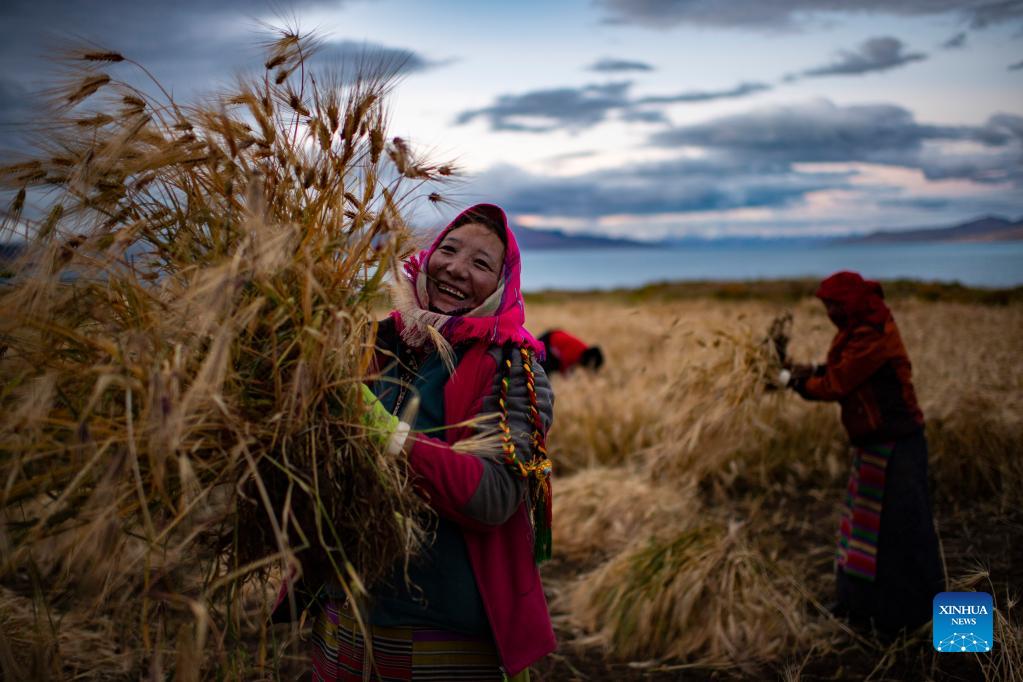Multimedia tools sought in telling Tibet stories
Updated: 2021-09-27 By ZHANG YANGFEI (China Daily)  Print
Print 



Villagers harvest highland barley at Ombu township, Nyima county, Nagqu city of Southwest China's Tibet autonomous region, Sept 23, 2021. [Photo/Xinhua]
China should seize opportunities amid ongoing multimedia development to enhance its international communications capacity and spread more Tibetan stories to global audiences, experts said.
As a topic frequently covered by global media outlets, the Tibet autonomous region has been an important source of stories about China. The country should explore and make full use of different media channels to provide more comprehensive coverage of the region to the world, they said.
More than 20 scholars and media professionals from China, South Korea, Italy, the United Kingdom, the United States and Canada shared their views on how to convey stories about Tibet in a global context at an online forum hosted by the Communication University of China on Friday.
Duan Peng, vice-president of the university, said during the opening of the forum that China needs to think further how to "present a real, three-dimensional and diverse plateau to the international community" and showcase how Tibetan culture has integrated with cultures of other ethnic groups and as part of the nation.
The China's Xizang in Dialogue with the World forum was the second such event dedicated to exchanges about developments in Tibet. The first was held last year. Xizang is the name of Tibet in Mandarin.
Liao Shengqing, dean of Yunnan University's School of Journalism, said its research showed that topics involving Tibet have become a focus around the world, with related coverage found in influential media outlets across Europe, North America and India.
With regard to content, most reports focus on Tibet's historical status and geographical scope from a critical perspective. "It brings a certain negative impact to the objective image of Tibet," Liao said.
He said China should explore more communication channels to provide a more comprehensive coverage of Tibet. The reporting should enhance the spread of factual information to break stereotypes in the international community that can be traced to misleading reports by some Western media.
Cheng Manli, director of the National Institute of Strategic Communication at Peking University, said the West's perception of China has undergone a fundamental shift since 2018 largely due to China's strategic development and the profound changes in international economic, technological, cultural, security and political areas.
Major Western media still have advantages in forming public opinion, and the stereotypes they spread are not expected to change in the short term, Cheng said.
China has greatly developed its international communication capacity over the past decade and has its voice heard in major events. But it still needs to actively explore more diverse platforms and communication bodies to enhance its global communication impact.
Shi Anbin, associate dean of the School of Journalism and Communication at Tsinghua University, also stressed the importance of diverse communication channels regarding Tibet, saying China should foster more "culture opinion leaders" to tell Tibetan stories in innovative ways.








